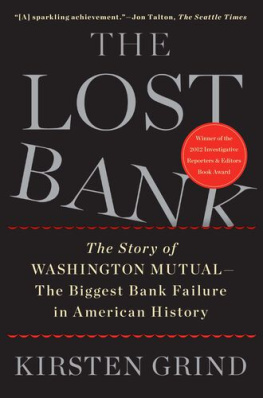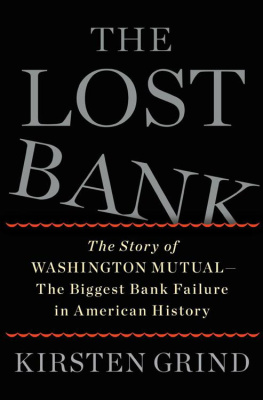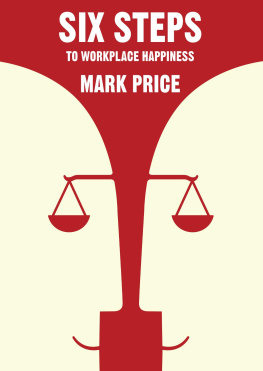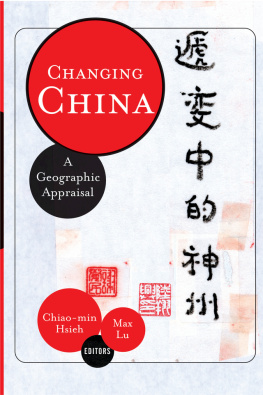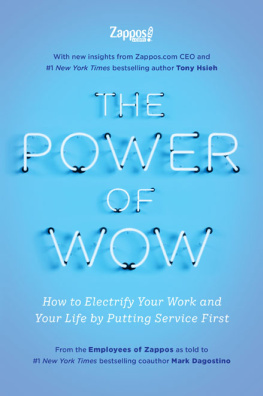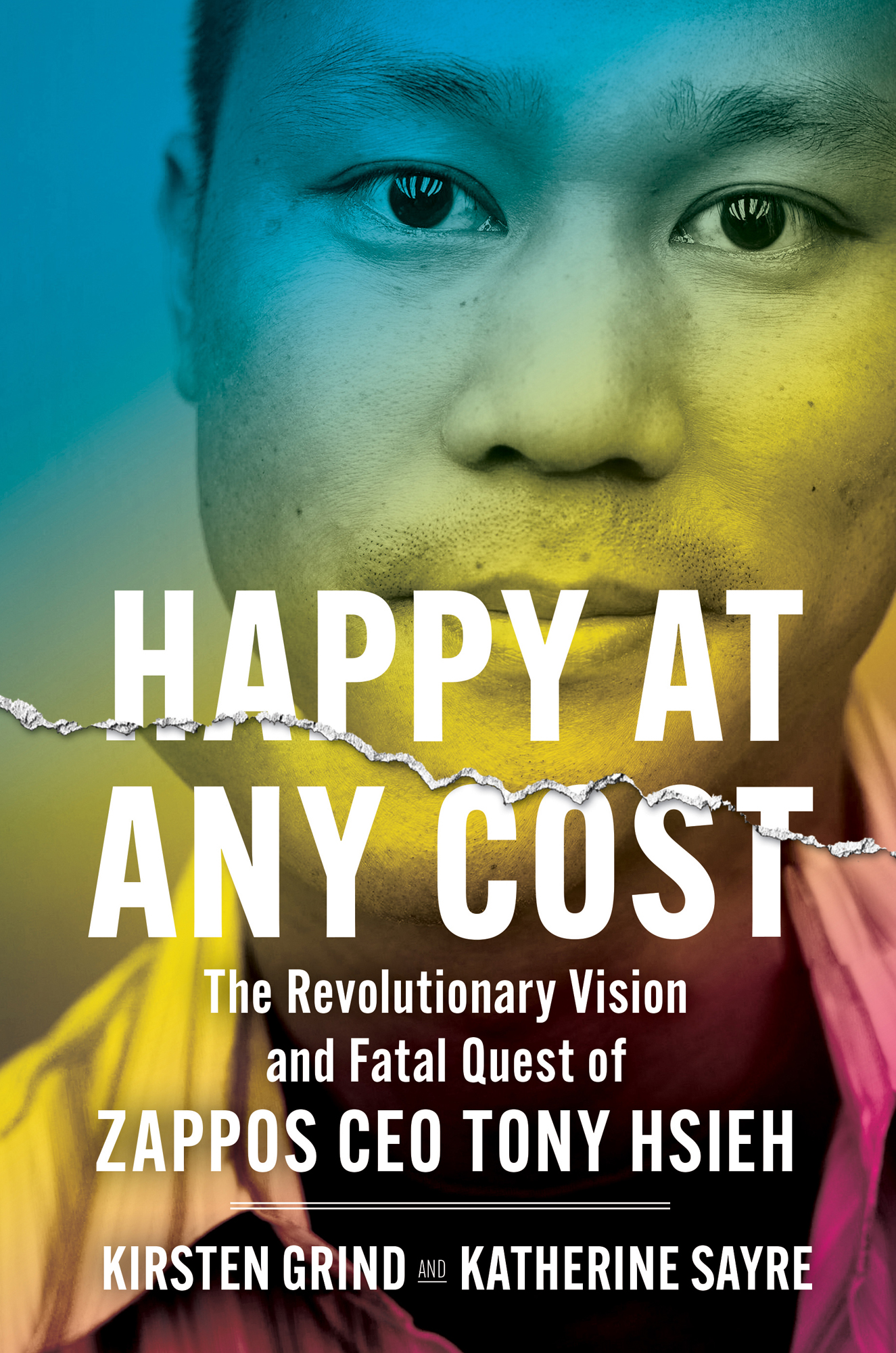CONTENTS
Guide
Happy at Any Cost
The Revolutionary Vision and Fatal Quest of Zappos CEO Tony Hsieh
Kirsten Grind and Katherine Sayre
For Steve Grind.
Even though I dedicated my first book to him, he deserves it even more this time.
Kirsten
For my mom
Katherine
You will never be happy if you continue to search for what happiness consists of. You will never live if you are looking for the meaning of life.
Albert Camus
NOTE TO READERS
T ony Hsiehs sudden death in late November 2020 at only forty-six years of age sent shock waves through the business community and around the world.
One of Americas most beloved entrepreneurs, Tony was adored and respected for his unconventional ideas on workplace culture and happiness, which he detailed in his best-selling book, Delivering Happiness: A Path to Profits, Passion, and Purpose. A near billionaire, he had almost single-handedly developed downtown Las Vegas over the previous decade. He had built one of the most joyful companies on earth as chief executive officer of the shoe-selling site Zappos, now owned by Amazon. Thousands of people around the world, many of whom didnt even know him, loved him because of his singular ability to lift people up and see the best in them.
His story might have ended there, with the beautiful obituaries published in newspapers and magazines that detailed his life and accomplishments, including where we work as reporters, the Wall Street Journal.
But Tony died under mysterious circumstances at a young age in a shed fire in Connecticut. Almost immediately after his death, we began hearing stories about his last year as he embarked on a new vision in a new town, Park City, Utah. He had surrounded himself with people who were taking advantage of him. We were told that alcohol and drugs had played a role in his death, but we werent sure how. We learned that he might have suffered from mental health issues, possibly worsened by the isolation of the Covid-19 pandemic. Meanwhile, few details about the fire that had killed him were released in the weeks after his death, including why Tony was in New London, Connecticut, at all. A much bigger story needed to be unraveled.
As a result, we were faced with a challenge. On the one hand, we had a mystery: How did Tony Hsieh die? But we also had a biography, the storied career of a person who saw the world differently and encouraged others to believe in themselves, to write. And so we ended up with two intertwined stories: one about Tony Hsiehs life and one about his death. Because this is a deeply personal story, and to differentiate from other members of the Hsieh family, we have opted to refer to Tony by his first name throughout, while we use the last names of other people who are mentioned in this book. The exception is Jewel, who is commonly referred to by her first name.
Tony Hsieh moved to Park Citywhich he had often visited for the Sundance Film Festivalin early 2020 after leaving rehab with big plans. He wanted to boost arts in the community, support local businesses, and bring people together. It was in some ways modeled after his famous Las Vegas Downtown Project, in which he had invested $350 million in the development of a struggling part of the city. But like so many of us, he was privately struggling. He began heavily abusing drugs, exacerbating lifelong mental health issues that he had always hidden from others. He spent tens of millions of dollars in just a few months, with people around him vying for pieces of his fortune. It all caught up with him one night in a riverside house in New London, Connecticut, when a shed he was in caught fire.
We have based this account on more than two hundred interviews with his close friends, employees, business associates, and others such as lawyers, doctors, consultants, and professors who interacted with him in the last year of his life and throughout his career. Some people are quoted on the record; others spoke to us anonymously.
This book is also based on thousands of documents, photos, and videos. We obtained hundreds of police, local government, business, and court recordsfrom New London, the San Francisco Bay Area, Las Vegas, and Utah. Some we received through filing Freedom of Information Act requests or from public disclosures, others from people involved in the story.
Related to Tonys last year in Park City, we viewed dozens of pictures taken of Tonys multimillion-dollar mansion in Park City known as the Ranch, watched videos taken by those who had interacted with him, and reviewed dozens of employees schedules during the summer and fall of 2020. We viewed internal communications, such as emails and text messages, between members of Tonys inner circle. We have detailed our sourcing in full at the back of the book, including our efforts to obtain some documents that have not been released by Park City officials and responses from some of the parties involved.
We have also benefited from Tonys own book, Delivering Happiness, which he published in 2010, as well as a more recent book about Zappos in Tonys and his employees own words, The Power of WOW: How to Electrify Your Work and Your Life by Putting Service First.
We ask you not to assume that a person or a business that appears prominently in the narrative, or is mentioned, participated in this book, although every person and entity cited was given the opportunity to do so. Dialogue is in quotes only when it is described in a record, or when it was relayed by someone directly involved, or by someone who witnessed a particular scene. Please keep in mind that even in seemingly private moments, Tony was nearly always surrounded by multiple friends or employees.
A note about Cirque Lodge, the rehabilitation facility in Utah, in particular: it was enormously generous in granting us access to its owner, therapists, and other staff. We were allowed to tour its facilities and experience its program (including a helicopter ride!). However, the employees did not breach doctor-patient confidentiality by giving us information about Tony Hsiehs stay there or his medical condition in general, nor did they discuss any other patients who had visited the facility.
Some of the scenes in this book, particularly at the end, will be hard to digest. Were especially aware of how difficult it might be for Tonys loved ones. This is a story of a business pioneer who pushed countless boundaries throughout his career but also suffered from addiction and mental health issues, particularly in his last year. From the very nature of his death, parts of the story will be disturbing. But at the heart of Tonys life story is his drive to connect with peopleto solve problems for others and generally make the world a kinder place in which to livea legacy that has continued even after his death and that we hope this book will contribute to.
Know that we have chosen the descriptions of his mental, emotional, and physical states with the utmost care and that we have not included many devastating accounts and details from friends, employees, and visitors that would have only served to repeat descriptions of his condition or make the story appear salacious. What we did choose to use, we did so with the intention of showing his unfortunate decline at a time when many people around him were taking advantage of his condition. Our primary hope, however, is that through these carefully selected scenes and details, Tonys story will serve as a warning to many others not to ignore looming mental health and addiction issues.

